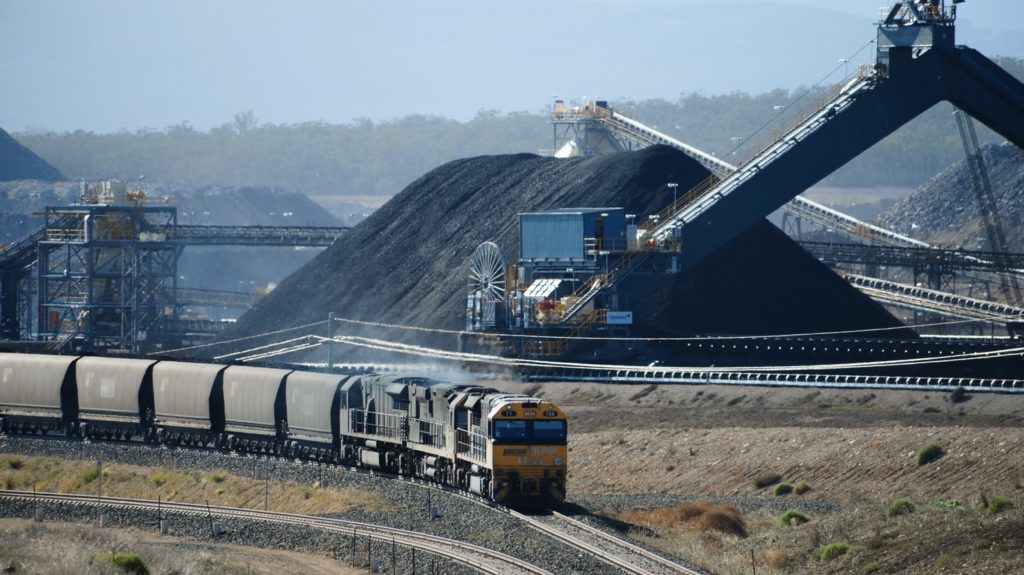28 September 2016
In the News – Whitehaven soars to become ASX’s best performer

Respected Australian Financial Review columnist Trevor Sykes has published a piece analysing Whitehaven Coal.
The article – entitled Whitehaven Coal soars to become ASX’s best performer – can be read here or below.
Whitehaven Coal soars to become ASX’s best performer
By Trevor Sykes
The best performing stock in the S&P/ASX200 so far this year must be Whitehaven Coal (WHC).
Whitehaven shares started 2016 at 70c and slumped to 37.5c by mid-February before roaring away to $2.40 as this column is written. A genuine six-bagger!
As the year began, of course, Whitehaven was heavily disliked. Local farmers and environmental activists had been running a noisy campaign against the development of its Maules Creek mine, near Gunnedah, for three years. They believed the mine was a threat to biodiversity and water and would require much of the Leard forest to be bulldozed.
The campaign failed. Maules Creek was officially opened on September 2. Whitehaven said the mine came into production three months ahead of schedule and under budget.
Whitehaven now has four coal mines (Narrabri, Maules Creek, Tarrawonga and Rocglen) between Gunnedah and Narrabri in New South Wales, as well as the smaller Werris Creek mine near Quirindi. Their combined production was 15.1 million tonnes in FY16 and the company is cranking up to exceed 20mt in the current year.
Maiden profit
Last financial year Whitehaven produced a maiden profit of $20.5 million. Not terrific but a massive improvement on the $342 million loss for FY15. Net debt is down from $936 million to $859 million and its cash cost per tonne has been reduced by 8 per cent to $56.
Whitehaven collected an average $70 per tonne in FY16. That was $4 lower than in FY15 due to lower coal prices, but Whitehaven’s production cost fell by $5.
The massive capital expenditure to bring in Maules Creek ($701 million compared to a forecast of $767 million) is now behind Whitehaven, and the company stands to reap the financial benefits.
It’s a good story, but the question is whether the share price has run too far. As Whitehaven has just over a billion shares on issue, the $20.5 million profit represents just 2¢ a share. No dividends are proposed yet, because Whitehaven’s priority is to pay down debt.
The excitement caught many by surprise. Shaw and Partners put out a recommendation saying they liked the investment thesis and expected the shares to trade higher in the medium to longer term. Nevertheless Shaw recommended selling the stock at $1.45 and reinvest in some of the resource sector laggards. Since then Whitehaven has barged ahead by another dollar.
The punters buying the shares obviously like the story and are looking further ahead.
Maules Creek is particularly valuable because it produces one of the highest quality semi-soft coking coals sold into Asia. That makes both the thermal and metallurgical coals suitable feed for Asian steelmakers and the modern high-energy, low-emission (HELE) technology power stations being built there.
Lower costs
Maules Creek achieved its 2016 result on sales which were 84 per cent thermal coal. The proportion of higher-priced metallurgical coal is expected to increase over the next four years as the mine’s production ramps up from 7.8mtpa to 13mtpa.
The company’s other mines are also quite healthy, recording strong production and lower costs. Narrabri is breaking production records and is one of Australia’s lowest cost coal mines. Whitehaven also holds the Vickery project, close to Gunnedah, which has a resource of 505mt.
Whitehaven is not reliant on any single customer. Japan, Korea and Taiwan are its largest customers for thermal coal and India for metallurgical. China is also a customer, accounting for 12 per cent of its metallurgical output but relatively little thermal.
Finally, whatever the environmental drawbacks, Whitehaven has been a great supporter of the local communities. Of its 843 workforce in June, 80 per cent lived in the area. The company also spent more than $200 million with local businesses and suppliers.
And we should have all bought the shares in February.
Trevor Sykes is not a licensed investment advisor. Views expressed are those of the author and not a substitute for tailored investment advice.
Categories:
Company news
 Whitehaven coal
Whitehaven coal